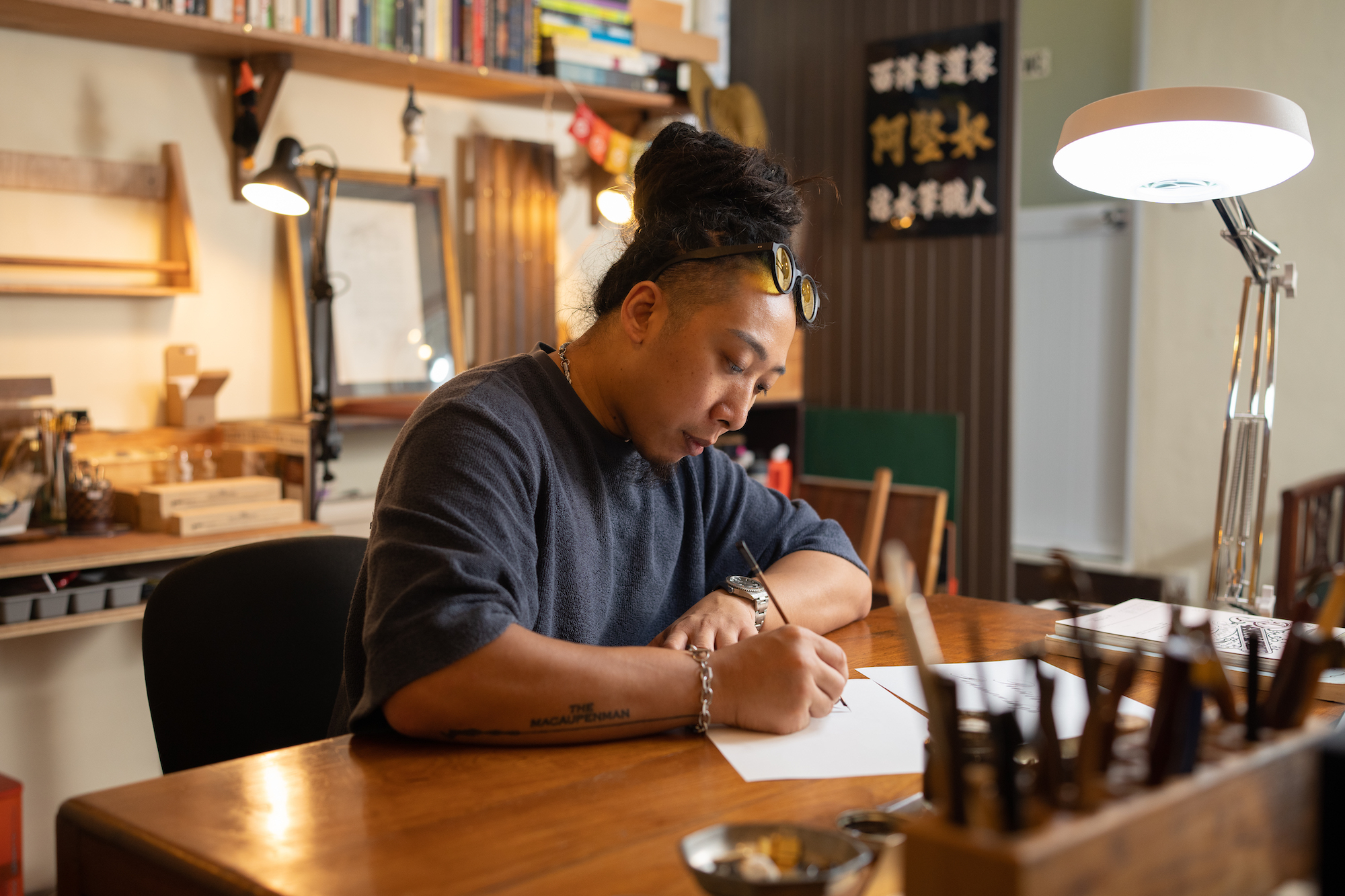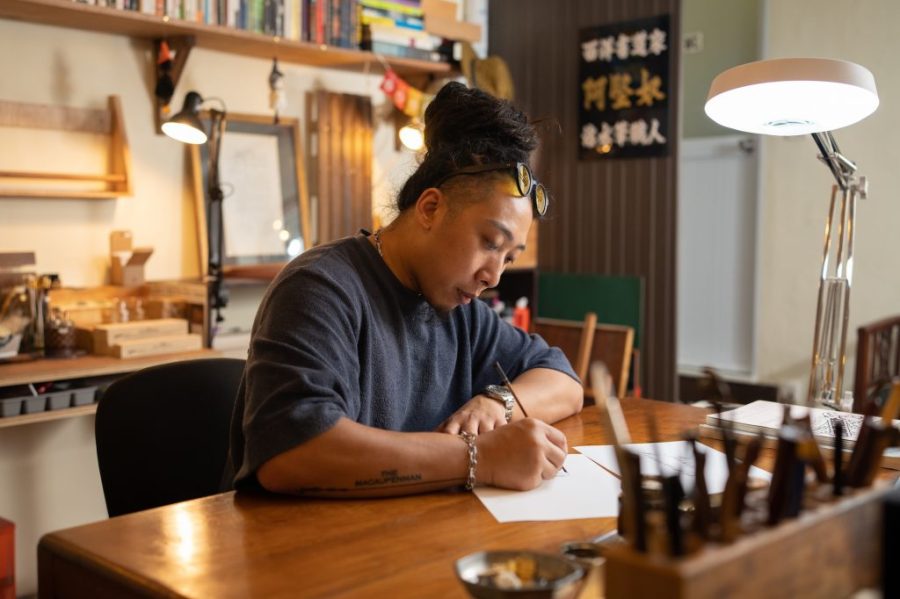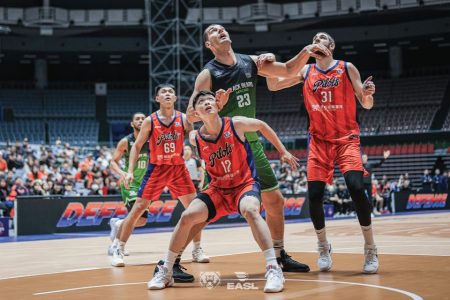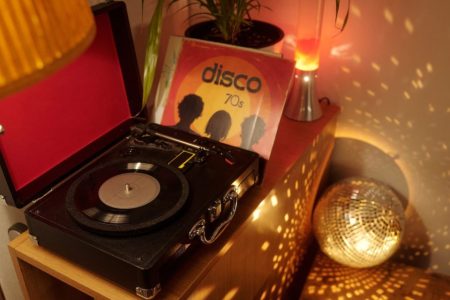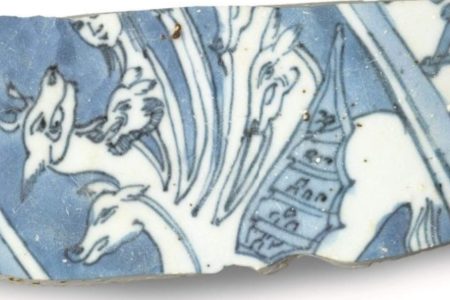What do you get if you combine the ancient Greek words for beauty (kallos) and writing (graphein)? Calligraphy – the art of decorative handwriting. While calligraphy appears to have evolved independently in various places around the world (first as engravings, later with ink) over the past several thousand years, the word itself entered most European languages in the late 16th century. Of course, the handwriting it referred to used Latin characters (Western calligraphy). Chinese calligraphy (书法, or shūfǎ) has its own history and artistic significance.
The golden age of Western calligraphy, however, was during the Middle Ages – particularly between the 8th and 15th centuries – due to the spread of Christianity. Monks used it in their meticulous transcriptions of the bible, and other religious texts. The mid-15th century invention of the printing press largely accounts for the decline in Western calligraphy’s usage. It was never an everyday sort of handwriting. Rather, calligraphy was – and remains – used to convey artistic flair or sacred meaning.
It might be an art of the past, but calligraphy has dedicated fans working hard to keep it alive. Macao-based Aquino da Silva, for example, has made calligraphy both his job and his mission.
Silva runs his business, the Macau Penman, from Travessa do Mercado, in the middle of Macao. His calligraphy studio – where he does design work and teaches students – is the second storey of a three-level building (he also owns the antique gallery below, and his personal living space up above). Silva’s workshop is right next door. That’s where he fashions specialised pens, rulers, and inks to be shipped worldwide.
A pleasant day for Silva involves typeface research and carpentry, with retro music playing in the background. Not one, but four cats keep him company: Morning, Picnic, Music, and Whiskey (each named after something the calligrapher enjoys).
A crafter since the start

Silva was born in Macao in 1985 to a Portuguese dad, a Macao local policeman and a Thai mum. When Silva was a little boy, he enjoyed arts and crafts – especially anything using coloured paper and glue. By the time he was ready for university, in 2006, his path seemed obvious: design.
Silva enrolled at the Macao Polytechnic Institute (today known as the Macao Polytechnic University, or MPU). Its design course is divided into two streams, namely visual arts and graphic design. The former covers so-called ‘fine arts’, such as painting. Silva majored in the latter, which tends to rely on digital tools and be applied more commercially. The medium he ended up specialising in, however, straddles both camps.
“Calligraphy is hand-drawn, it’s not something anyone with a computer and the right software can do,” Silva explains. “It takes time to practise beautiful handwriting. But it’s got commercial applications too, like writing services for brand products or events.”
To be more specific, Silva specialises in Western calligraphy. This is different to Chinese calligraphy, which is more common in Macao. Silva explains that the biggest difference between the two styles is tools. Dip pens used in Western calligraphy have broad, metal nibs, for instance, while Chinese calligraphers use brushes made with animal hair.
The self-described designer and artist first encountered Western calligraphy in his first year at university. His late teacher and mentor, Henry Kwok, showed the class a typography book full of various fonts and styles of handwriting. The pages depicting Western calligraphy “sparked something inside me,” recalls Silva.
“This was the writing I saw on bottles of red wine – now I knew it had a name.”
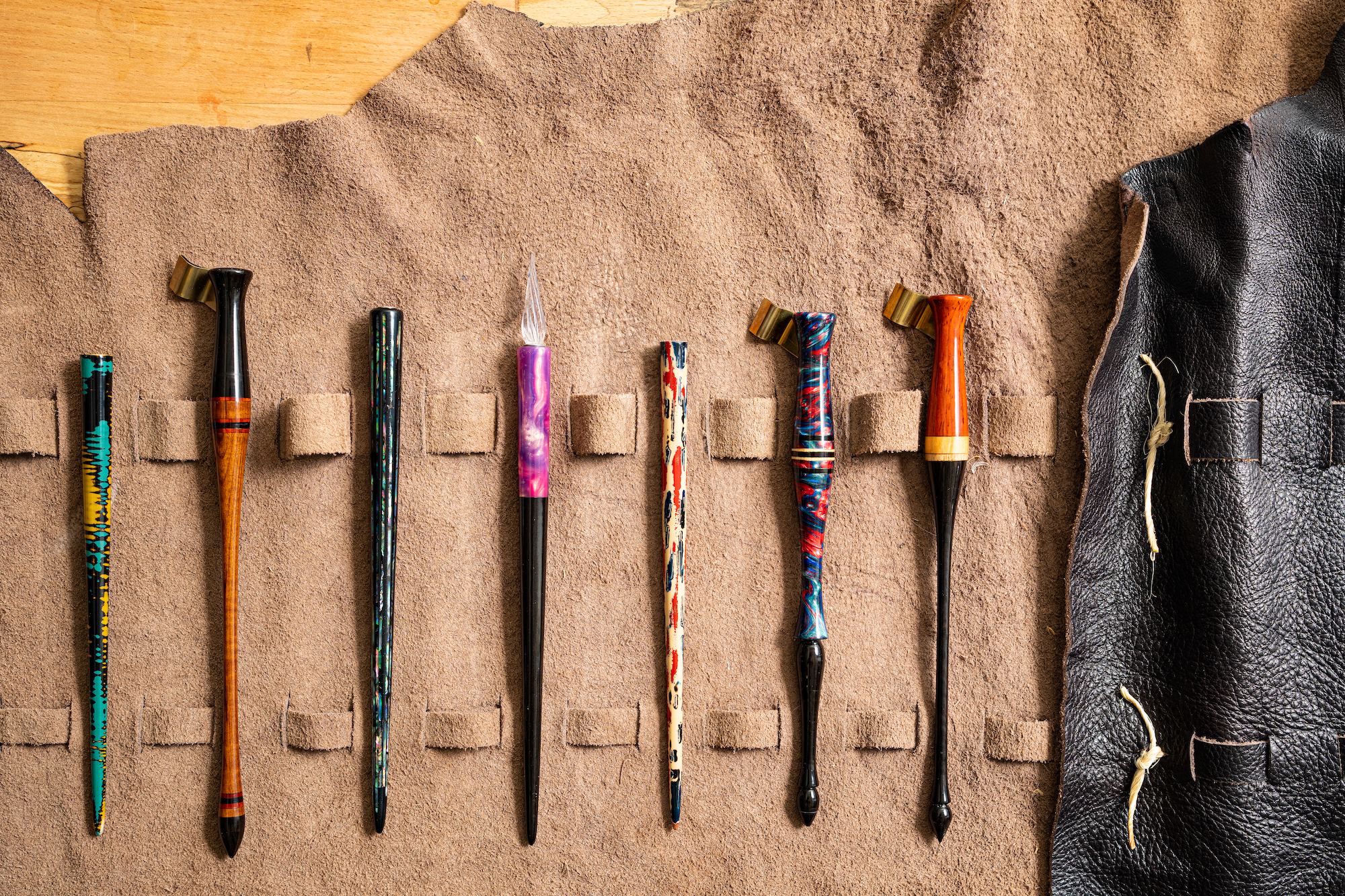
Kwok himself was not a calligrapher, but the Hong Kong-born teacher was interested in learning the craft. He set up an after-hours club where he, Silva, and a few other students practised their penmanship using pencils and traditional dip pens.
“[The club] motivated me to dig deeper into calligraphy,” Silva says. “I researched online and bought books like The Universal Penman by George Bickham. Anything technical was mostly self-learnt.”
Silva graduated with a bachelor’s degree in graphic design in 2011 and landed his first real job six months later, at the Macao Science Centre (MSC). There, he was responsible for the key visuals around in-house exhibitions, from promotional materials to venue decorations. After three years with the MSC, he decided it was time to focus solely on his real passion: calligraphy.
From teaching a subject, to making its tools
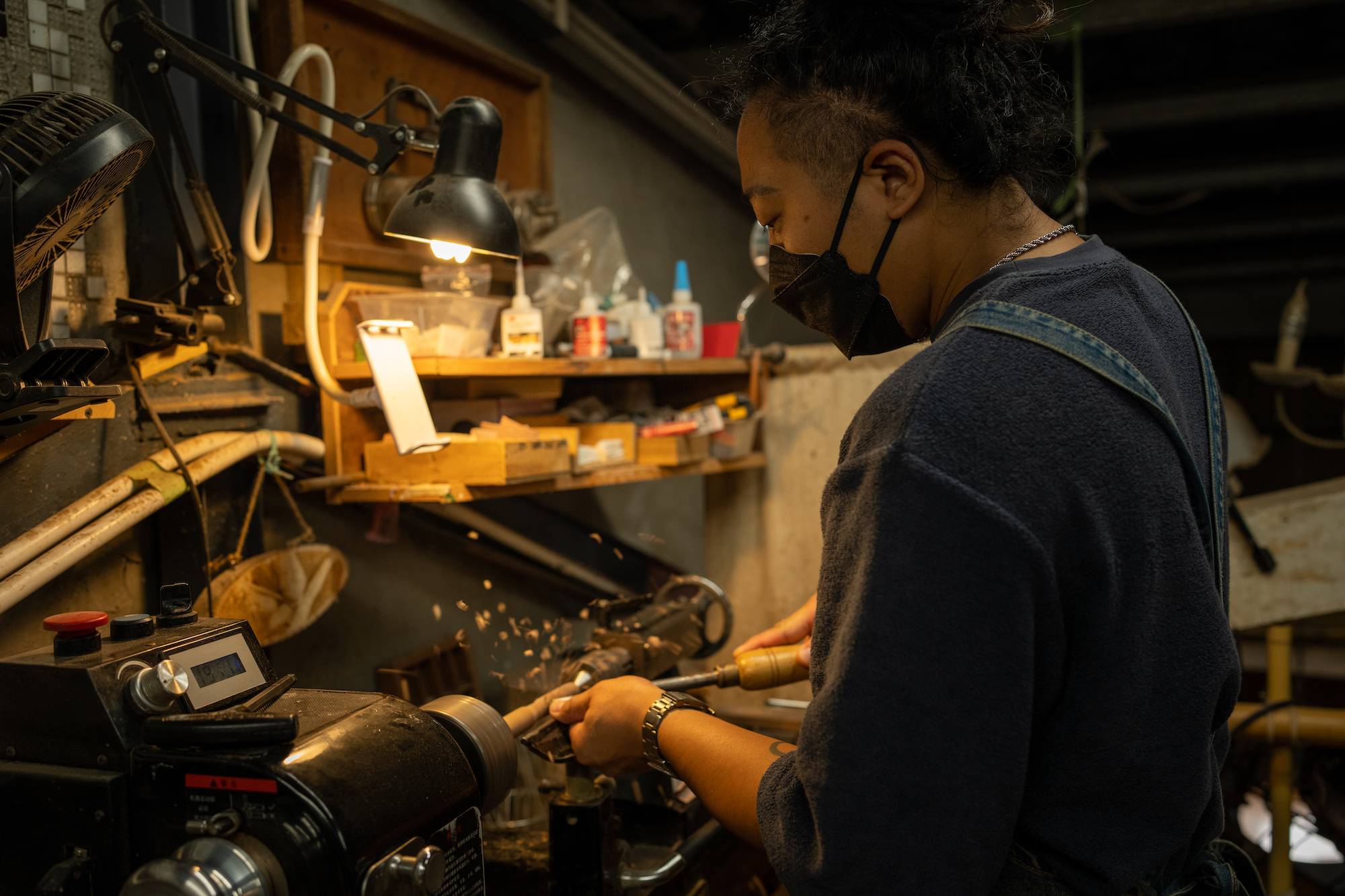
At first, Silva taught Western calligraphy at the Macao Museum of Art. He always tried to make lessons as broadly appealing as possible, diving into calligraphy’s storied history and introducing people to the various tools used to create it – as well as teaching them to write with an artistic flourish.
The course was a hit with students and before long, he was headhunted by private education centres. Silva set up his own studio in 2014.
In 2016, after two years of teaching, Silva held his first calligraphy exhibition: ‘The Renaissance of Pen and Ink’, hosted at the Ox warehouse (a non-profit artspace). Instead of paper, he wrote on ceramics – made with own hands during a stint in Japan.
That same year, in line with his passion for all things artisanal, Silva began making his own dip pens out of wood. He taught himself by watching DIY (do it yourself) videos online, mainly from penmakers in the US. To do it properly, Silva purchased a traditional lathe – a manual machining tool used to shape metal and/or wood. But he quickly switched to a more efficient electric lathe.
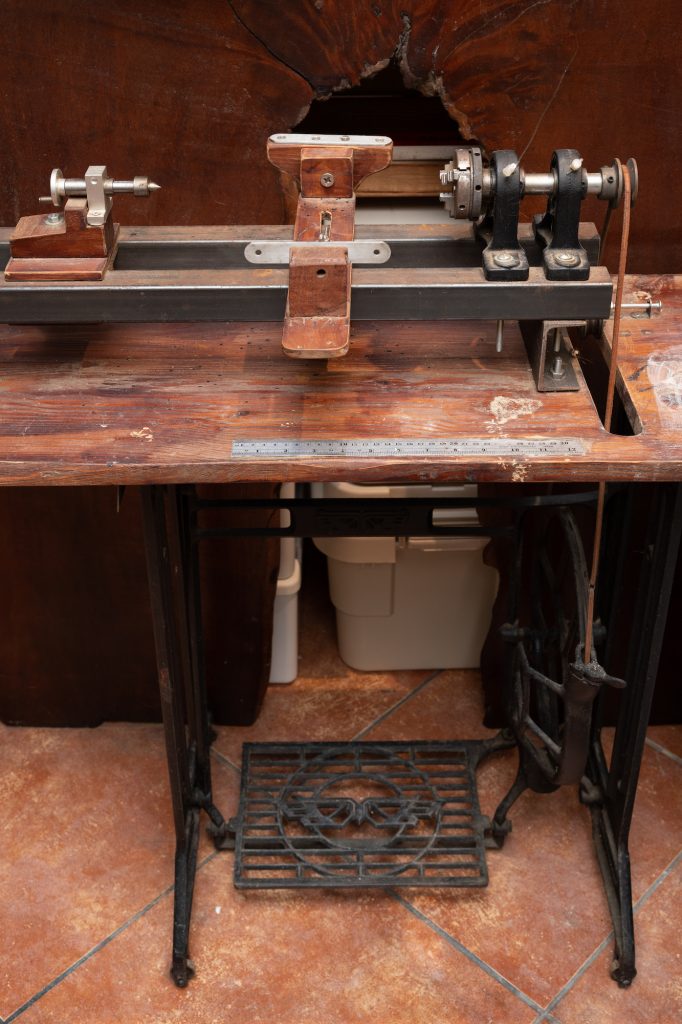
“There were no calligraphy pen makers in Macao and I was eager to make it happen,” Silva says. Once he’d mastered his new lathe, he began selling the finished products on his website – attracting calligraphy enthusiasts from around the world. Orders flooded in. A memorable commission came from a man in Hong Kong who suffered from muscular atrophy. Usually, after accepting a commission, Silva asks each customer to measure their purlicue (the space between the forefinger and thumb). In this case, the reply was unexpected, “what if I don’t have fingers?”
Once Silva had worked out that the man wasn’t joking, he set about designing a pen that would suit this unique situation. He sent three dummy models over to Hong Kong for the man to try out, and ended up with a happy customer.
[See more: An artistic haven: 6 of Macao’s most famous painters through the centuries]
“I learnt that making dip pens is not just for my own interest, but it can also be meaningful for customers,” Silva says of the experience. Later in 2016, after making around 900 pens, Silva began hosting workshops for people keen to try making their own.
Pens are not the only calligraphy tools Silva makes himself. In 2017, he designed a calligraphy ruler (a tool calligraphers use to guide their writing). Demand for these rulers was high: he sold 4000 in his first six months.
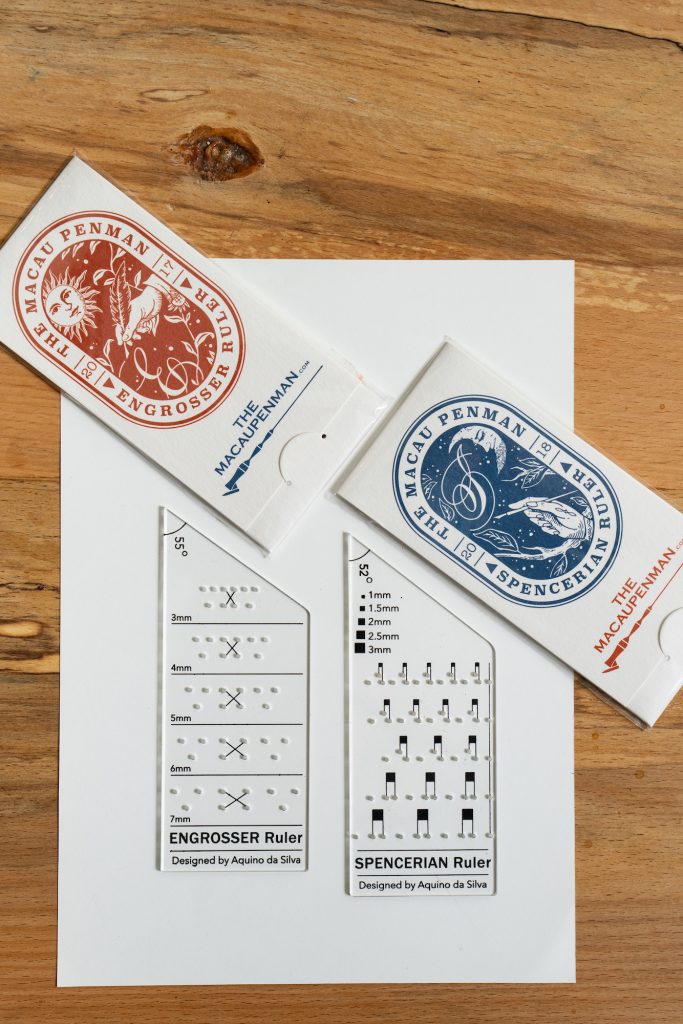
Next up was ink. Silva desperately wanted to attempt making an old-fashioned type of ink renowned for its durability and ability to dry quickly. Invented in the early Middle Ages, this ‘iron gall ink’ is a mixture of tannins extracted from plant galls (growths occurring after an insect infestation) and iron salts. Since Macao doesn’t allow raw plant materials to be imported, he settled on a chemical substitute for the gall.
“After about a month of repeated tests, the eighth formula was finally satisfactory and could produce the effect of the product,” he says. That effect is a distinctive colour transformation. Iron gall ink starts off a pale grey, then turns dark brown or black as it reacts with the air.
Today, Silva sells his products through his personal website as well as brick-and-mortar stationary stores in more than a dozen countries – including Australia, Malaysia, Russia, and the US. They’re also available via two of the world’s biggest online calligraphy stores: John Nealbooks and Paper and Ink.
Spreading the (written) word

On top of his teaching, design, and tool-making projects, Silva published a book in 2021, written with the help of Benny Tang – president of the Macao Type Design Society. At the society, Silva acts as the consultant in charge of Western calligraphy. “We encourage the members to pay attention to fonts and different forms of writing culture from different, and sometimes we even discover research possibilities from what they share,” he says.
‘Preserve Penmanship – Engrosser’s Script’, as Silva’s book is titled, instructs readers in a calligraphy style developed in the late 1800s. It also covers the tools of the trade; Silva talks about his experiences of making pens, rulers, and ink by hand. US President Ronald Reagan’s former calligrapher, Michal Sull, even wrote an enthusiastic prologue. Silva met Sull in 2017, when Sull travelled to Macao for a calligraphy seminar coordinated by Silva.
Silva says his book, written in traditional Chinese, was never intended to be a money maker. Rather, he and Tang simply wanted to publish the first book in Western calligraphy in Macao.
Engrosser’s script is just one of several dozen font styles within Western calligraphy. Silva has mastered three of them, and says there are more on his bucket list. One is the style of lettering carved into Rome’s Trajan Column, which was built in 113AD. For now, however, he’s focused on expanding calligraphy’s appeal in Macao. He feels a sense of responsibility for keeping the art form alive.
“I’m not saying I’m important, but what if I died?” he asks, only half-jokingly. “Who’s going to carry on this legacy? That’s why I have taught everything I’ve learnt to my two apprentices, Loki Vong and Aka Lei, and I hope that in turn, they’ll pass western calligraphy on to more and more people in Macao.”
—With reporting by Mani Fong
